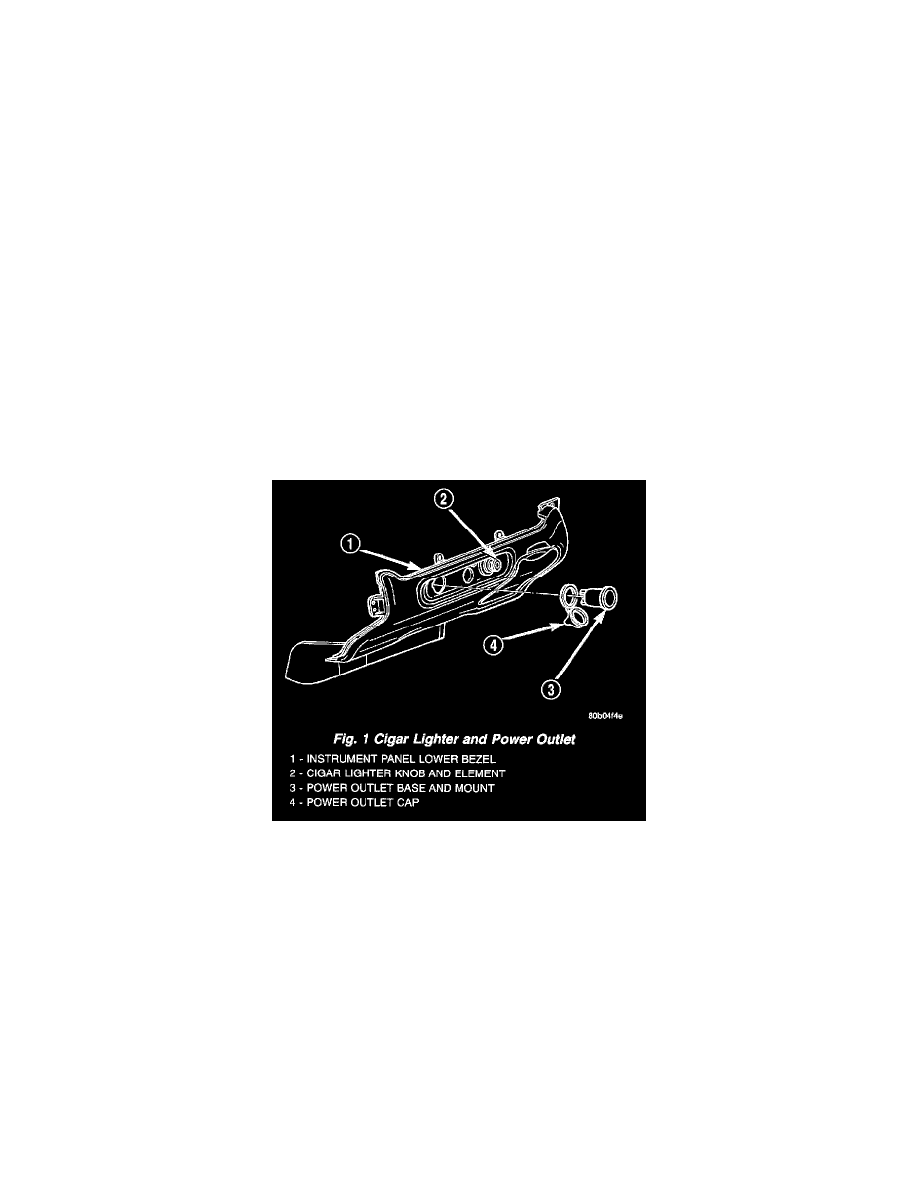Durango 2WD V8-4.7L VIN N (2001)

Power Distribution Center (PDC): Description and Operation
POWER DISTRIBUTION
This covers the various standard and optional power distribution components used on this model. The power distribution system for this vehicle
consists of the following components:
-
Power Distribution Center (PDC)
-
Junction Block (JB)
-
Relay and Fuse Block.
The power distribution system also incorporates various types of circuit control and protection features, including:
-
Automatic resetting circuit breakers
-
Blade-type fuses
-
Cartridge fuses
-
Circuit splice blocks
-
Flashers
-
Relays.
Following are general descriptions of the major components in the power distribution system. See the owner's manual in the vehicle glove box for
more information on the features and use of all of the power distribution system components.
The power distribution system for this vehicle is designed to provide safe, reliable, and centralized distribution points for the electrical current
required to operate all of the many standard and optional factory-installed electrical and electronic powertrain, chassis, safety, security, comfort
and convenience systems. At the same time, the power distribution system was designed to provide ready access to these electrical distribution
points for the vehicle technician to use when conducting diagnosis and repair of faulty circuits. The power distribution system can also prove
useful for the sourcing of additional electrical circuits that may be required to provide the electrical current needed to operate many accessories
that the vehicle owner may choose to have installed in the aftermarket.
Fig. 1 Cigar Lighter And Power Outlet
CIGAR LIGHTER OUTLET
A cigar lighter is standard equipment on this model. The cigar lighter is installed in the instrument panel lower bezel, which is located near the
center of the instrument panel, below the radio. The cigar lighter base is secured by a snap fit within the instrument panel lower bezel.
The cigar lighter knob and heating element unit and the cigar lighter receptacle unit are available for service. These components cannot be repaired
and, if faulty or damaged, they must be replaced.
The cigar lighter consists of two major components a knob and heating element unit, and the cigar lighter base or receptacle shell. The receptacle
shell is connected to ground, and an insulated contact ii] the bottom of the shell is connected to battery current. The cigar lighter receives battery
voltage from a fuse in the junction block only when the ignition switch is in the Accessory or ON positions.
The knob and heating element are encased within a spring-loaded housing, which also features a sliding protective heat shield. When the knob and
heating element are inserted in the receptacle shell, the heating element resistor coil is grounded through its housing to the receptacle shell. If the
cigar lighter knob is pushed inward, the heat shield slides up toward the knob exposing the heating element, and the heating element extends from
the housing toward the insulated contact in the bottom of the receptacle shell.
